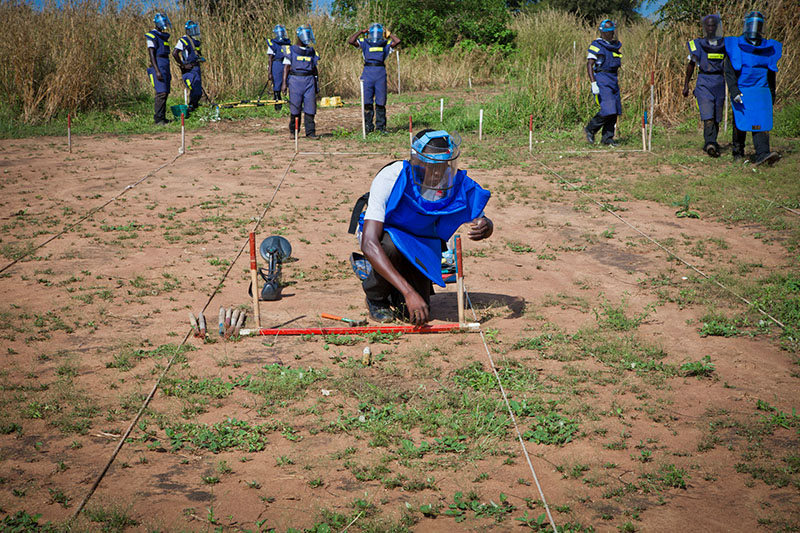In large part a legacy of the Soviet era, the presence of explosive remnants of war continues to pose a risk in Azerbaijan – even decades after the end of conflict.
After the collapse of the Russian Empire, the independent Azerbaijan Democratic Republic was established in 1918. It remained an independent nation until 1920, when it was incorporated into the Soviet Union. Azerbaijan declared sovereignty in 1989, and independence in 1991.
Whilst conflict in the nation dates back over a century, most contamination from explosive remnants of war (ERW), including landmines, is because of armed conflicts that took place between 1988 – 1994, and in 2020.
The presence of this explosive ordnance (EO) continues to pose a risk in Azerbaijan.
Conflict history and current explosive threats in Azerbaijan
In 1988, towards the end of Soviet rule in the region, extensive conflict was fought between Azerbaijan and Armenia which resulted in a large quantity of landmines being laid along the Armenian-Azeri border.
The more recent conflict ending in Nov 2020 has resulted in a new, large and complex explosive ordnance threat in and around the Nagorno-Karabakh region. The main threat is believed to be represented by anti-tank mines and anti-personnel mines, but unexploded ordnance (UXO) is also a widespread problem.
Survey and Clearance
Azerbaijan National Agency for Mine Action (ANAMA) was established over 20 years ago and has grown into a mature, well-managed and technically competent mine action organisation. It has a well-resourced and internationally acclaimed training capability, developed primarily to fulfil its own planning, quality management and technical guidance functions, but also to support establishing a broad mine action capacity within the country.
ANAMA enjoys a strong international profile and emerging recognition as a regional centre of excellence. It has played a key role in developing the mine action capacity of several neighbouring countries, and has been sought to assist the transition of international operations to national management by one of the largest mine action programs in the world in Afghanistan.
Since its establishment, ANAMA has cleared over 520 million square kilometres of Azerbaijani land, destroying nearly 800,000 mines and other explosive weapons in the process.
SafeLane Global supports landmine and unexploded ordnance clearance work in Azerbaijan
SafeLane Global (SafeLane) counters explosive and hazardous material threats. It holds global expertise in the clearance of landmines and explosive remnants of war. Its work on land and in marine environments has been creating safer spaces for clients and communities for over 30 years.
SafeLane commenced survey and clearance operations in Azerbaijan in 2021 conducting manual demining and Battle Area Clearance using manual, mine detection dogs and mechanical demining assets.
It is working in close partnership with Qaya Safety Solutions, a newly established Azerbaijan demining company, to clear UXO and landmines in the Cəbrayıl district (under the coordination of the Azerbaijan National Agency for Mine Action (ANAMA)).
SafeLane also recently provided a blast simulation report to an oil company which had identified the presence of UXO close to a pipeline.
With experience in-country and the ability to rapidly deploy to support client operations, contact SafeLane to discuss your project in Azerbaijan. Discover how we can help you stay on time, budget and safe from the threats of landmines and other explosive ordnance.
Azerbaijan office address:
AZ1007, Baku City Nasimi District,
Feyzulla Gasimzadeh,
House 4, Apartment 75


